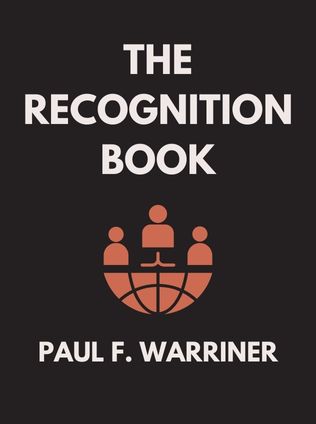
The Recognition Book
50 Ways to Step Up, Stand Out and Get Recognized
By Paul F. Warriner
Published 11/2018
About the Author
Paul F. Warriner is a highly respected coach, trainer, and consultant known for his expertise in helping individuals and teams achieve their fullest potential. With over 15 years of experience, Warriner has worked across various industries, providing guidance to sales and management teams, business owners, and professionals. His coaching approach is practical and results-oriented, focusing on actionable strategies for personal and professional growth. In his book, The Recognition Book: 50 Ways to Step Up, Stand Out and Get Recognized, Warriner shares his insights on how to gain recognition in the workplace by developing key character traits, behaviors, and skills.
Main Idea
The Recognition Book: 50 Ways to Step Up, Stand Out and Get Recognized is a comprehensive guide to achieving professional recognition and success. Paul F. Warriner emphasizes that recognition is not solely about being good at one’s job; it involves a strategic approach to personal development and relationship-building. The book provides a four-step framework and outlines 50 key attributes that can help individuals stand out in their careers. Warriner encourages readers to create a recognition plan, understand their strengths and weaknesses, and develop behaviors that foster positive relationships and professional growth. The book serves as a practical toolkit for anyone looking to enhance their career and achieve their goals.
Table of Contents
- What Recognition Means
- Build Your Recognition Plan
- Know Who You Are, How You Are
- How You Treat Others
- What You Do
- How You Behave
What Recognition Means
In the opening chapter, Warriner explores the concept of recognition and its various forms, from promotions and pay raises to simple acknowledgments of a job well done. He argues that understanding what recognition means to each individual is crucial for setting and achieving career goals. Warriner advises readers to reflect on their core values and beliefs, which can guide their professional aspirations. He writes, "Most people have hopes and dreams, but never quite formulate them into goals and write them down."
To help readers clarify their goals, Warriner suggests asking themselves key questions, such as: "If you knew you couldn’t fail, what is the one thing you would do?" and "If you had all the money you needed, what would you do with your time?" These questions are designed to uncover one’s true passions and aspirations, which are essential for creating a meaningful recognition plan.
Warriner emphasizes that the first step towards recognition is self-awareness. By understanding one’s strengths, weaknesses, and core values, individuals can set realistic and fulfilling goals. He also highlights the importance of aligning personal and professional goals, ensuring that one's career path is both satisfying and aligned with their values.
Build Your Recognition Plan
Warriner introduces the concept of a recognition plan, which is similar to a business plan but focused on personal and professional development. The recognition plan involves setting clear goals, identifying the desired type of recognition, and establishing a timeframe for achieving these goals. Warriner emphasizes that having a written plan helps individuals stay focused and motivated. He advises, "Set timeframes for your goals, whether a week, a month, a year, or a lifetime."
Sign up for FREE and get access to 1,400+ books summaries.
You May Also Like
The Subtle Art of Not Giving a F*ck
A Counterintuitive Approach to Living a Good Life
By Mark MansonRich Dad Poor Dad
What the Rich Teach Their Kids About Money - That the Poor and Middle Class Do Not!
By Robert T. KiyosakiHow To Win Friends and Influence People
The All-Time Classic Manual Of People Skills
By Dale CarnegieQuiet: The Power of Introverts
The Power of Introverts in a World That Can't Stop Talking
By Susan Cain



















